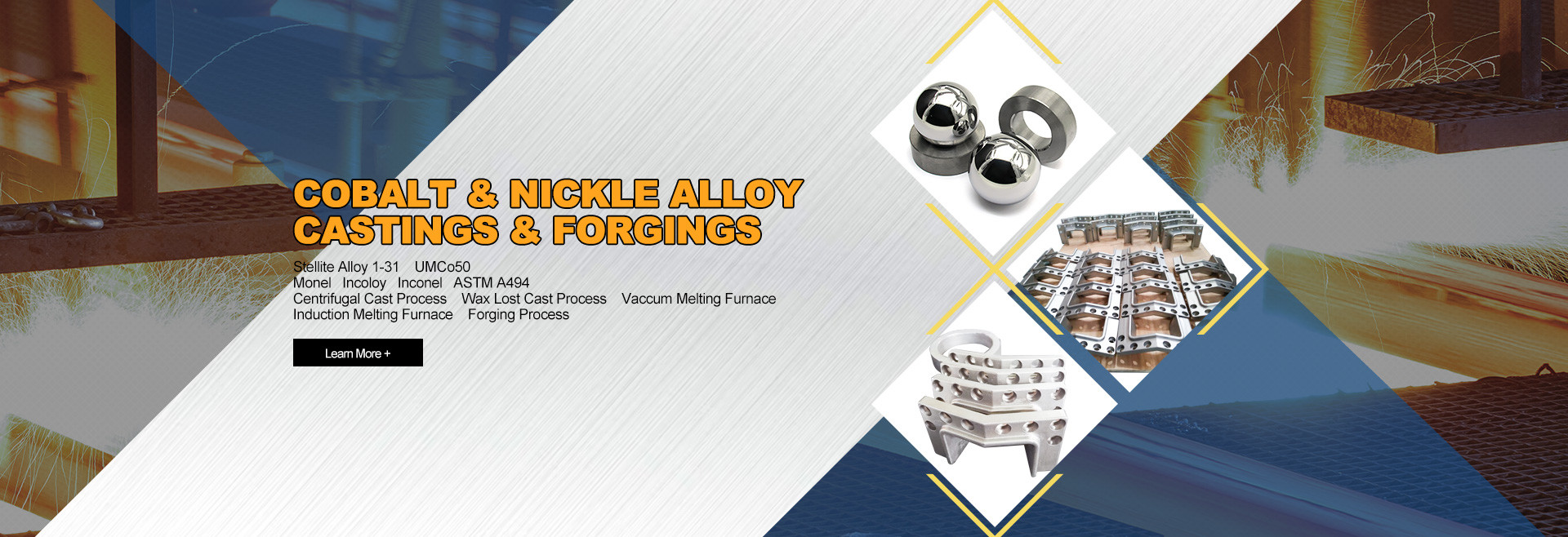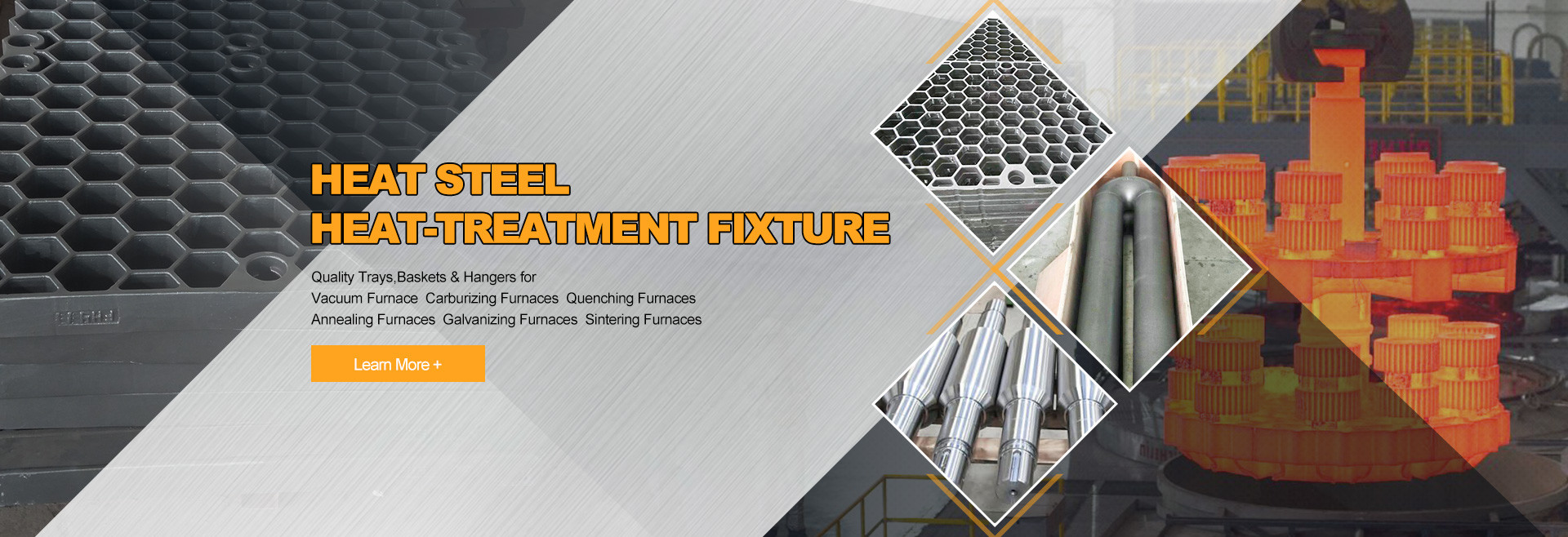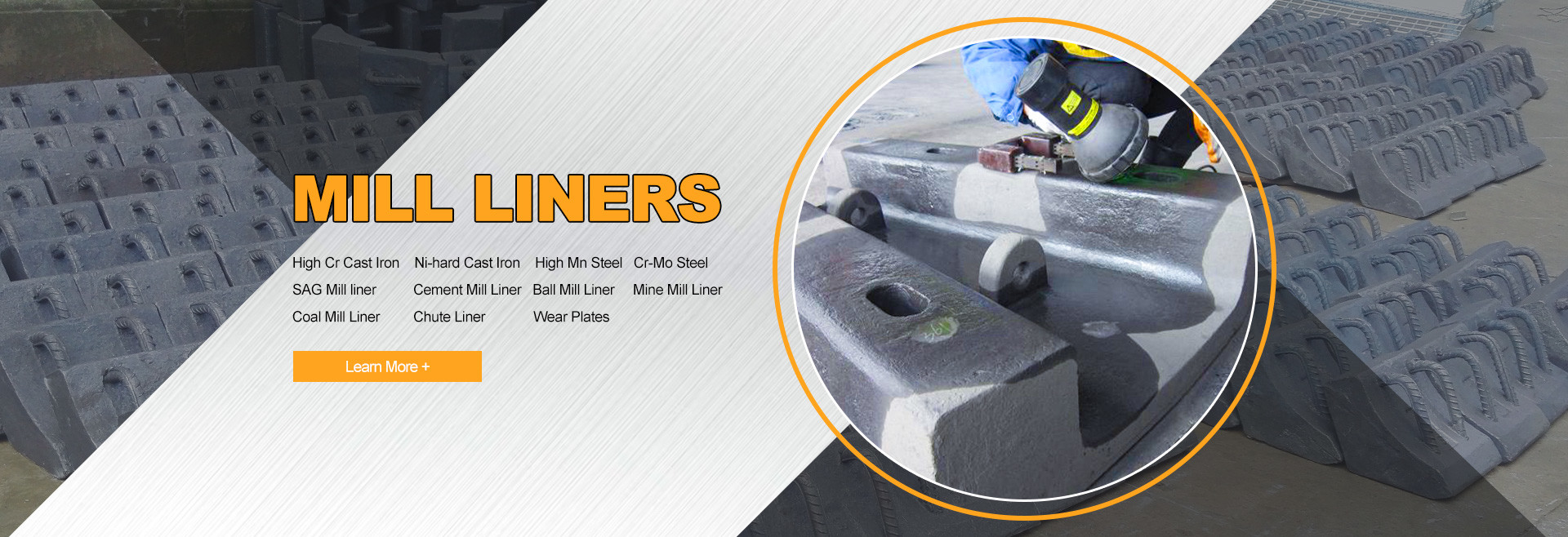知っておくべき3つの驚くべき研削ローラーの用途
2025-12-24
/* スタイル分離のためのユニークなルートコンテナ */
.gtr-container-7k9p2q {
font-family: Verdana, Helvetica, "Times New Roman", Arial, sans-serif;
color: #333;
line-height: 1.6;
padding: 16px;
box-sizing: border-box;
max-width: 100%;
overflow-x: hidden;
}
/* 一般的な段落スタイル */
.gtr-container-7k9p2q p {
margin: 1em 0;
font-size: 14px;
text-align: left !important;
word-break: normal;
overflow-wrap: normal;
}
/* メイン見出しスタイル (h2を置き換える) */
.gtr-container-7k9p2q .gtr-heading-main {
font-size: 18px;
font-weight: bold;
margin: 1.75em 0 1em 0;
color: #222;
text-align: left;
}
/* サブ見出しスタイル (h3を置き換える) */
.gtr-container-7k9p2q .gtr-heading-sub {
font-size: 16px;
font-weight: bold;
margin: 1.375em 0 0.8em 0;
color: #222;
text-align: left;
}
/* 順序なしリストのスタイル */
.gtr-container-7k9p2q ul {
list-style: none !important;
margin: 1em 0;
padding: 0;
}
.gtr-container-7k9p2q ul li {
position: relative;
padding-left: 1.5em;
margin-bottom: 0.5em;
font-size: 14px;
text-align: left;
list-style: none !important;
}
.gtr-container-7k9p2q ul li::before {
content: "•" !important;
position: absolute !important;
left: 0 !important;
color: #5a4bde; /* 箇条書きのアクセントカラー */
font-size: 1.2em;
line-height: 1;
}
/* 引用スタイリング */
.gtr-container-7k9p2q blockquote {
margin: 1.5em 0;
padding-left: 1.5em;
border-left: 2.4px solid #5a4bde; /* 引用のアクセントカラー */
color: #555;
font-style: italic;
}
.gtr-container-7k9p2q blockquote p {
margin: 0;
font-size: 14px;
text-align: left !important;
}
/* 水平線のスタイリング */
.gtr-container-7k9p2q hr {
border: none;
border-top: 1px solid #d1d1d1;
margin: 2em 0;
}
/* PC画面用のレスポンシブ調整 */
@media (min-width: 768px) {
.gtr-container-7k9p2q {
padding: 24px 40px;
max-width: 960px; /* 大画面での可読性を高めるために幅を制限 */
margin: 0 auto; /* コンポーネントを中央に配置 */
}
}
研削ローラー技術は、工場や鉱業のためだけのものであると思っているかもしれません。しかし、これらの機械は他の場所でも使用されています。
食品加工では、研削ローラー機を使ってチョコレートを滑らかにします。また、穀物を非常に細かくすることもできます。
リサイクル工場では、研削ローラーシステムを使用して、廃棄物から貴重な材料を取り出しています。
繊維および包装業界では、これらの機械を使用して生産ラインを高速化しています。
驚きましたか?これらの業界が研削ローラーを使用しているのは、それらが正確で、強力で、うまく機能するからです。
主なポイント
研削ローラーは鉱業だけでなく、食品加工でも重要です。チョコレートを滑らかにするのに役立ちます。また、コーンフラワーを細かくすることもできます。
リサイクルでは、研削ローラーはe-wasteから有用な材料を取り出すのに役立ちます。これは、ゴミが埋立地に送られる量が少なくなることを意味します。また、持続可能であることで地球にも貢献します。
繊維および包装会社も研削ローラーを使用しています。それらは生地をより滑らかにします。また、生産ラインの高速化にも役立ちます。
これらの機械は、多くの分野で作業をより速く、より安全にします。それらは、人々が資源をより良く利用し、廃棄物を少なくするのに役立ちます。
チョコレートを食べたり、新しい服を着たりするときは、研削ローラーについて考えてみてください。それらは、これらのものを作る上で重要な役割を果たしています。
食品加工の用途
チョコレートの研削ローラー
チョコレート工場で研削ローラーを見つけるとは、予想しないかもしれません。ほとんどの人は、チョコレートを甘いおやつと考えますが、重機で作られた製品とは考えません。実際には、チョコレートメーカーはローラーミル機を使用して、カカオ豆を粉砕し、滑らかなペーストに混ぜます。研削ローラーは豆を押しつぶし、分解します。このプロセスは、口の中で溶けるチョコレートを得るのに役立ちます。ローラーミルは、チョコレートに細かいテクスチャを与え、粗い部分を取り除きます。高品質のチョコレートの違いを味わうことができます。
ご存知でしたか?岩を粉砕するのと同じ技術が、お気に入りのデザートをクリーミーでおいしくするのに役立ちます。
コーン製粉用のローラーミル
コーン製粉は、ローラーミル機が活躍しているもう一つの驚くべき場所です。トルティーヤ、チップス、または朝食用シリアルなど、さまざまな形でコーンを食べるかもしれません。これらの食品を作るために、工場はローラーミルを使用して、コーンカーネルを細かい粉に粉砕します。ローラーミルは、重いローラーを使用してコーンを粉砕し、粉砕します。この方法は、古い粉砕方法よりも高速で正確です。均一で滑らかな粉が得られ、より良い食品製品を作るのに役立ちます。ローラーミルはまた、粒子のサイズを制御するのに役立ち、各タイプの食品に適切なテクスチャが得られます。
ローラーミルは、各バッチのコーンからより多くのものを得るのに役立ちます。
それらは、食品製粉をより安全で清潔にします。
より少ない廃棄物で、より多くの人々に食べ物を提供できます。
これらの用途は、研削ローラー技術が鉱業や金属加工だけのものではないことを示しています。食品製粉では、ローラーミルを使用して品質と効率を向上させています。次回チョコレートやコーンベースの食品を食べるときは、これらの機械の重要な役割を思い出してください。
リサイクル業界の用途
e-wasteリサイクルの研削ローラー
研削ローラーという言葉を聞くと、リサイクルを思い浮かべないかもしれません。ほとんどの人は、これらの機械を大きな工場や鉱山で想像します。しかし、現在では、リサイクルセンターでも使用されており、特にe-wasteに使用されています。e-wasteとは、古いコンピューター、電話、その他の電子機器のことです。これらのものには、金属や鉱物が含まれています。これらの材料を分離して、再び使用できるようにする必要があります。研削ローラーは、電子部品を小さな破片に粉砕します。これにより、金属、プラスチック、その他のものを分別しやすくなります。これを行うことで、より多くのものをリサイクルし、埋立地に送られるゴミを減らすことができます。
ヒント:古い電話をリサイクルすると、研削ローラーがその貴重な部品を取り出すのに役立つ場合があります。
ローラーミルによる材料回収
ローラーミルは、多くリサイクル工場でも見られます。それらは、有用な材料を回収するために重要です。リサイクルの際には、できるだけ多くの良い材料を回収したいと考えます。ローラーミルは、廃棄物を小さな破片に粉砕します。これは、粒子サイズ削減と呼ばれます。小さな破片は、さまざまなものを分離しやすくします。たとえば、ワイヤーから銅を取り出したり、プラスチックからガラスを取り除いたりできます。ローラーミルは、他の機械よりも高速に動作し、エネルギー消費も少なくて済みます。これにより、時間と資源を節約できます。
ローラーミルをリサイクルに使用することのいくつかの利点をご紹介します。
より多くの材料を回収できます。
リサイクル製品をより良くします。
リサイクルをよりクリーンで安全にするのに役立ちます。
これらの例は、ローラーミルなどの研削ツールがリサイクルの効率を向上させるのにどのように役立つかを示しています。研削は、鉱物だけのものではありません。また、リサイクルをより簡単で役立つものにすることで、地球にも貢献します。
繊維および包装製造
繊維加工用の研削ローラー
ほとんどの人は、研削ローラーが繊維工場で使用されているとは考えていません。通常、これらの機械は金属や鉱物用であると考えています。しかし、繊維会社は、研削ローラーを使用して、生地をより滑らかで強くしています。繊維が加工されるとき、それらは柔らかく均一である必要があります。研削ローラーは、粗い繊維を分解し、不要な部分を取り除きます。これにより、生地は触ると心地よくなります。
研削ローラーは、布を仕上げる機械にも使用されています。これらの機械は、生地をプレスし、磨きます。表面は滑らかになり、高品質に見えます。このプロセスは、古い方法よりもはるかに高速です。工場は、より多くの生地を短時間で作ることができます。研削ローラーは、高速でうまく機能し、より良い結果をもたらします。
注:研削ローラーは、衣服やその他の製品の生地を柔らかく、強く、きれいに保つのに役立ちます。
包装ラインのローラーミル
ローラーミル機は、多くの包装工場で見られます。それらは、紙、段ボール、プラスチックフィルムなどの材料を成形し、切断するのに役立ちます。ローラーミルを使用すると、破片の大きさを制御できます。これにより、包装が製品に完全に適合するのに役立ちます。
ローラーミルはまた、材料を高速包装ラインに供給します。このプロセスは、停止することなく動き続けます。これにより、生産がより速く、より効率的になります。多くの人は、ローラーミルは食品や鉱物のみに使用されていると考えています。しかし、それらは包装にも重要です。
ローラーミルが包装に役立つ方法をいくつかご紹介します。
材料を高速で切断し、成形します。
より少ない材料の使用に役立ち、コストを節約します。
包装ラインをスムーズに稼働させます。
これらの例は、研削ローラー技術が、思っている以上に多くの場所で使用されていることを示しています。繊維および包装業界は、これらの機械を使用して製品をより良く、より速くしています。
研削ローラーが食品、リサイクル、生地や包装の製造に役立つことを学びました。多くの人は、これらの機械は大きな工場のためだけのものであると考えています。しかし、それらはもっと多くのことを行います。研削ローラーは、製品をより良くするのに役立ちます。また、リサイクルのクリーンさを保つのにも役立ちます。生産ラインをより速く動かします。これは、より多くの人々が食べ物を得ることを意味します。また、重要な資源も節約します。
研削ローラーは多くのことができます。すぐに新しい場所で使用されているのを見るかもしれません。
よくある質問
研削ローラーが食品加工で役立つのはなぜですか?
研削ローラーは、食品を滑らかにするのに役立ちます。チョコレートにクリーミーなテクスチャを与えます。また、コーンフラワーを均一にします。これらの機械は、食品の味を良くするのに役立ちます。また、工場での無駄を減らすのに役立ちます。
研削ローラーはリサイクルに役立ちますか?
研削ローラーは、e-wasteを高速で分解します。金属をプラスチックからすばやく分離します。より多くの貴重な部品を回収できます。リサイクルセンターは、これらの機械を使用することでより清潔に保たれます。
研削ローラーは、繊維生産に安全ですか?
繊維工場は、研削ローラーを使用して、柔らかい生地を作ります。それらは、布を強く、滑らかにします。これらの機械は、高速かつ安全に動作します。作業者は、それらを使用してより良い布を作ることができます。
ヒント:研削ローラーは、粗い繊維を取り除きます。これにより、衣服は着心地がよくなります。
ローラーミルは、包装ラインをどのように改善しますか?
ローラーミルは、包装材料をすばやく切断します。製品に合うように紙とプラスチックを成形します。工場は、より少ない材料を使用することでコストを節約できます。生産ラインは、より速く、よりスムーズに動きます。
もっと見る
耐磨板 の 中核 特性: 産業 保護 に 関する 究極 の ガイド
2025-12-19
.gtr-container-p9q1r3 {
font-family: Verdana, Helvetica, "Times New Roman", Arial, sans-serif;
color: #333;
line-height: 1.6;
padding: 15px;
box-sizing: border-box;
max-width: 100%;
overflow-x: hidden;
}
.gtr-container-p9q1r3 p {
font-size: 14px;
margin-bottom: 1em;
text-align: left !important;
word-break: normal;
overflow-wrap: normal;
}
.gtr-container-p9q1r3 .gtr-heading-2 {
font-size: 18px;
font-weight: bold;
margin-top: 2em;
margin-bottom: 1em;
color: #0056b3; /* 見出し用のプロフェッショナルブルー */
text-align: left;
}
.gtr-container-p9q1r3 ul {
list-style: none !important;
padding: 0;
margin: 0 0 1em 0;
}
.gtr-container-p9q1r3 ul li {
position: relative;
padding-left: 20px; /* カスタム箇条書き用のスペース */
margin-bottom: 0.5em;
font-size: 14px;
text-align: left;
list-style: none !important;
}
.gtr-container-p9q1r3 ul li::before {
content: "•" !important;
position: absolute !important;
left: 0 !important;
color: #0056b3; /* 箇条書きの色 */
font-size: 1.2em;
line-height: 1;
}
/* PC用のレスポンシブ調整 */
@media (min-width: 768px) {
.gtr-container-p9q1r3 {
padding: 30px;
max-width: 960px; /* 可読性のために大きな画面では幅を制限 */
margin: 0 auto; /* コンポーネントを中央に配置 */
}
.gtr-container-p9q1r3 .gtr-heading-2 {
font-size: 20px; /* PCでは見出しを少し大きく */
}
.gtr-container-p9q1r3 p,
.gtr-container-p9q1r3 ul li {
font-size: 15px; /* PCでは本文を少し大きく */
}
}
産業オペレーションは、機器の摩耗による絶え間ない課題に直面しており、これがコストのかかるダウンタイムと頻繁な交換につながります。高品質の耐摩耗プレートは、高摩耗シナリオに合わせて調整された優れた特性により、最初の防御線となります。これらのコア機能を理解することで、耐久性を高め、コストを削減し、生産をスムーズに継続させるための適切な耐摩耗プレートを選択できます。
1. プレミアム耐摩耗性材料と硬度
信頼性の高い耐摩耗プレートの基盤は、その材料にあります。最高級の耐摩耗プレートは、優れた耐摩耗性を実現するために特殊な合金を使用しています。
一般的な材料:NM360/NM450(炭素マンガン合金)、高クロム合金(15%〜25%Cr)、マンガン鋼(11%〜14%Mn)。
硬度範囲:HRC50〜65、通常の炭素鋼板よりも3〜5倍の耐摩耗性。
主な利点:硬い表面は、鉱石、砂利、スラグなどの研磨性物質を扱う場合でも、材料の摩擦による損傷を最小限に抑えます。
2. 優れた耐衝撃性
産業環境では、重い材料の衝突が頻繁に発生します。耐摩耗プレートは、ひび割れを起こすことなくこれらの衝撃に耐えなければなりません。
熱処理:焼入れと焼き戻しプロセスにより、材料構造が最適化され、耐衝撃性≥120J/cm²が保証されます。
性能:大きな材料(例:破砕機内の鉱石)からの高頻度衝撃に、変形や脆性破壊なしに耐えます。
通常のプレートとの違い:通常の鋼板は、重い衝撃を受けると簡単にひび割れますが、耐摩耗プレートは長期使用のために構造的完全性を維持します。
3. 高密度で安定した構造
欠陥のない構造は、耐摩耗プレートの信頼性、特に連続運転において重要です。
製造プロセス:複合圧延(複合耐摩耗プレート用)や精密鋳造などの高度な技術により、気孔、収縮、ひび割れが排除されます。
複合構造の利点:「ベースプレート+耐摩耗層」設計(結合強度≥300MPa)は、ベースプレートの強度と耐摩耗層の耐久性を組み合わせ、層の剥離を回避します。
均一な性能:一貫した構造により、プレート全体で均一な摩耗が保証され、局所的な故障を防ぎます。
4. 精密なカスタマイズと汎用性の高い加工性
すべての産業機器には、独自の寸法と設置要件があります。耐摩耗プレートは、適応性に優れています。
寸法の柔軟性:厚さは3mmから50mmで、公差は≤±0.3mmです。不規則な形状(例:破砕機ライナー、コンベアシュート)にカスタマイズ可能。
加工性:切断、溶接、曲げが容易です。既存の機器に大きな変更を加える必要がなく、設置時間とコストを削減できます。
完璧なフィット感:カスタマイズされた寸法により、機器の表面との密着性が確保され、摩耗を加速する隙間を回避できます。
5. 耐食性と耐熱性
産業環境はしばしば過酷です。耐摩耗プレートは、湿度、化学物質、温度変動に耐えなければなりません。
耐食性:表面に高密度の酸化膜を形成し、水分、鉱物スラリー、軽度の酸/アルカリ浸食に耐えます。屋外および湿度の高い操作に適しています。
温度適応性:幅広い範囲(-20℃〜600℃)に耐え、高研削熱または高温スラグ条件下で安定した性能を維持します。
過酷な条件下での長寿命:錆びたり柔らかくなったりしやすい通常のプレートよりも優れており、過酷な環境での耐用年数を延長します。
6. 長い耐用年数と費用対効果
耐摩耗プレートのコア機能は、具体的な経済的メリットにつながります。
耐用年数の延長:連続的な高摩耗操作で6〜18か月間使用でき、通常の鋼板よりも3〜5倍長持ちします。
コストの削減:交換頻度の低下、メンテナンス作業の削減、ダウンタイム損失の最小化により、長期的なコストを50%以上削減します。
高い費用対効果:初期費用は高くなりますが、総所有コストは通常の保護材料を使用するよりもはるかに低くなります。
これらの機能がお客様のオペレーションにとって重要な理由
耐摩耗プレートのコア特性である耐摩耗性、耐衝撃性、適応性、耐久性は、産業生産の最大の課題に直接対応します。鉱業、建設、冶金、またはマテリアルハンドリングのいずれであっても、これらの機能を活用する耐摩耗プレートを選択することで、機器の保護を維持し、生産を継続し、投資が長期的な価値を提供することを保証します。
特定の機器(例:破砕機、コンベア)または作業条件に適合する耐摩耗プレートの選択についてサポートが必要な場合は、カスタマイズされた推奨事項のために要件をお気軽にお知らせください!
もっと見る
耐磨プレート:工業機器の耐磨保護
2025-12-18
.gtr-container-d4e7f0 {
font-family: Verdana, Helvetica, "Times New Roman", Arial, sans-serif;
color: #333;
line-height: 1.6;
padding: 20px;
max-width: 960px;
margin: 0 auto;
box-sizing: border-box;
}
.gtr-container-d4e7f0 p {
font-size: 14px;
margin-bottom: 1em;
text-align: left !important;
}
.gtr-container-d4e7f0 .gtr-title {
font-size: 18px;
font-weight: bold;
color: #0056b3;
margin-bottom: 24px;
text-align: left;
line-height: 1.4;
}
.gtr-container-d4e7f0 .gtr-section-title {
font-size: 16px;
font-weight: bold;
color: #0056b3;
margin-top: 30px;
margin-bottom: 15px;
text-align: left;
border-bottom: 1px solid #eee;
padding-bottom: 5px;
}
.gtr-container-d4e7f0 ol {
list-style: none !important;
padding: 0;
margin: 0 0 1em 0;
}
.gtr-container-d4e7f0 ol li {
position: relative;
padding-left: 25px;
margin-bottom: 8px;
font-size: 14px;
text-align: left;
}
.gtr-container-d4e7f0 ol li::before {
content: counter(list-item) "." !important;
position: absolute !important;
left: 0 !important;
top: 0;
font-weight: bold;
color: #0056b3;
width: 20px;
text-align: right;
}
.gtr-container-d4e7f0 strong {
font-weight: bold;
color: #0056b3;
}
.gtr-container-d4e7f0 .gtr-summary-text {
margin-top: 25px;
padding-top: 15px;
border-top: 1px solid #eee;
}
.gtr-container-d4e7f0 table {
width: 100%;
border-collapse: collapse !important;
border-spacing: 0 !important;
margin-bottom: 1em;
}
.gtr-container-d4e7f0 th,
.gtr-container-d4e7f0 td {
border: 1px solid #ccc !important;
padding: 8px 12px !important;
text-align: left !important;
vertical-align: top !important;
font-size: 14px;
word-break: normal;
overflow-wrap: normal;
}
.gtr-container-d4e7f0 th {
font-weight: bold;
background-color: #f0f0f0;
}
.gtr-container-d4e7f0 tr:nth-child(even) {
background-color: #f9f9f9;
}
.gtr-container-d4e7f0 .gtr-table-wrapper {
overflow-x: auto;
-webkit-overflow-scrolling: touch;
}
@media (min-width: 768px) {
.gtr-container-d4e7f0 {
padding: 30px 40px;
}
.gtr-container-d4e7f0 .gtr-title {
font-size: 18px;
margin-bottom: 30px;
}
.gtr-container-d4e7f0 .gtr-section-title {
font-size: 18px;
margin-top: 40px;
margin-bottom: 20px;
}
}
機器の摩耗、プレートのひび割れ、または頻繁な交換にお悩みですか?プレミアム耐摩耗プレートは、優れた性能で高摩耗の課題を解決します!
適切なものを選び、耐用年数を延長しましょう3~8倍、節約4,000~12,000年間、生産効率を25%以上向上させます。
1. 主な製品の特徴(詳細な焦点)
プレミアム耐摩耗材料:NM360/NM450、高クロム合金、マンガン鋼(11%~14% Mn)—硬度HRC50-65で、極度の耐久性を実現。
優れた耐衝撃性:焼入れ・焼戻し処理、衝撃靭性120J/cm²以上—ひび割れすることなく、重い材料の衝突に耐えます。
高密度複合構造:「ベースプレート+耐摩耗層」設計、結合強度300MPa以上—耐摩耗層の剥離を防止。
厳格な寸法精度:厚さ3~50mm、公差±0.3mm以下—不規則な形状にもカスタマイズ可能で、機器に完璧にフィット。
耐食性および耐熱性:高密度酸化皮膜を形成し、-20℃~600℃に対応—湿度の高い高温環境でも安定。
柔軟な加工性:切断、溶接、曲げが可能—設置に際して主要な機器の改造は不要。
滑り止めおよび耐摩耗性の向上:表面にオプションの滑り止めパターン—グリップ力を高め、材料の取り扱いにおける耐用年数を延長。
2. 主な特性による4つの主要な利点
長持ちする耐摩耗性:3~5倍通常の鋼板よりも耐久性が高く、高摩耗作業で6~18ヶ月使用できます。
幅広い産業への適応性:鉱業、建設、冶金、機械に適合—破砕機、コンベア、ミルを保護。
機器保護のアップグレード:摩擦/衝撃から機器本体を保護—2~3倍長寿命化し、メンテナンスコストを削減。
費用対効果の高い価値:初期費用は高くなりますが、長寿命化とダウンタイムの削減により—50%削減長期的な総コスト。
3. 5つの精密な適用シナリオ
鉱山設備:破砕室、ボールミルライナー—鉱石の衝撃と摩擦に耐え、連続的な選鉱を実現。
建設機械:掘削機のバケット、ローダーブレード—建設現場での岩石やコンクリートの摩耗に耐えます。
冶金スラグ処理:スラグコンベア、炉ライナー—高温および腐食性スラグに耐えます。
材料搬送:コンベアベルト、シュート—材料の滑りを防ぎ、搬送設備の摩耗を軽減。
化学工業:反応槽ライナー、耐食性パイプライン—化学処理における酸/アルカリ腐食に耐えます。
4. 4つの重要な選択基準
摩耗レベルへの材料のマッチング:軽摩耗→NM360; 重摩耗→高クロム合金—材料試験レポートを確認してください。
硬度と靭性のバランス:HRC50-65の硬度+120J/cm²以上の靭性—「硬いが脆い」欠陥を回避。
プロセスの品質チェック:「焼入れ+焼戻し+複合圧延」を優先—構造に砂穴やひび割れがないこと。
機器への寸法適合性:厚さ、サイズ、形状を確認—機器表面とのシームレスな結合を確保。
5. 3つの実用的な長寿命化のヒント
運転条件の制御:600℃を超えないようにし、強酸との直接接触を避ける—極端な場合は保護パッドを使用。
定期的な検査:2週間ごとに摩耗を確認—摩耗が30%を超えた場合は交換して機器を保護。
適切な設置:しっかりと結合し、3~5mmの熱膨張ギャップを確保—溶接応力によるひび割れを回避。
概要
耐摩耗プレートは、高い耐摩耗性、耐衝撃性、適応性を備えた産業保護の必需品であり、主要な課題を解決します。
材料、硬度、仕様に基づいて適切な耐摩耗プレートを選択することで、コストを削減し、生産を安定させ、効率を最大化できます。
カスタマイズされた推奨事項が必要ですか?無料のカスタムプランについては、機器の種類(破砕機、コンベアなど)または作業条件をお知らせください!
もっと見る
2025 年 の 白 鉄 と 灰 鉄 を 理解 する
2025-12-16
.gtr-container-p1q2r3 {
font-family: Verdana, Helvetica, "Times New Roman", Arial, sans-serif;
color: #333;
line-height: 1.6;
padding: 16px;
max-width: 100%;
box-sizing: border-box;
}
.gtr-container-p1q2r3 p {
font-size: 14px;
margin-bottom: 1em;
text-align: left !important;
line-height: 1.6;
}
.gtr-container-p1q2r3 .gtr-heading-2 {
font-size: 18px;
font-weight: bold;
margin-top: 1.5em;
margin-bottom: 0.8em;
color: #0056b3;
}
.gtr-container-p1q2r3 .gtr-heading-3 {
font-size: 16px;
font-weight: bold;
margin-top: 1.2em;
margin-bottom: 0.6em;
color: #0056b3;
}
.gtr-container-p1q2r3 ul,
.gtr-container-p1q2r3 ol {
list-style: none !important;
padding-left: 0 !important;
margin-left: 0 !important;
margin-bottom: 1em;
}
.gtr-container-p1q2r3 ul li {
position: relative;
padding-left: 20px;
margin-bottom: 0.5em;
font-size: 14px;
list-style: none !important;
}
.gtr-container-p1q2r3 ul li::before {
content: "•" !important;
position: absolute !important;
left: 0 !important;
color: #007bff;
font-size: 1.2em;
line-height: 1;
}
.gtr-container-p1q2r3 ol {
counter-reset: list-item;
}
.gtr-container-p1q2r3 ol li {
position: relative;
padding-left: 25px;
margin-bottom: 0.5em;
font-size: 14px;
list-style: none !important;
}
.gtr-container-p1q2r3 ol li::before {
content: counter(list-item) "." !important;
position: absolute !important;
left: 0 !important;
color: #007bff;
font-weight: bold;
width: 1.5em;
text-align: right;
line-height: 1;
}
.gtr-container-p1q2r3 blockquote {
border-left: 4px solid #007bff;
padding-left: 15px;
margin: 1.5em 0;
color: #555;
font-style: italic;
}
.gtr-container-p1q2r3 blockquote p {
margin: 0;
font-size: 14px;
}
.gtr-container-p1q2r3 .gtr-table-wrapper {
width: 100%;
overflow-x: auto;
margin-bottom: 1.5em;
}
.gtr-container-p1q2r3 table {
width: 100%;
border-collapse: collapse !important;
border-spacing: 0 !important;
margin: 0 !important;
min-width: 600px;
}
.gtr-container-p1q2r3 th,
.gtr-container-p1q2r3 td {
border: 1px solid #ccc !important;
padding: 8px 12px !important;
text-align: left !important;
vertical-align: top !important;
font-size: 14px;
line-height: 1.4;
}
.gtr-container-p1q2r3 th {
font-weight: bold !important;
background-color: #f0f0f0;
color: #333;
}
.gtr-container-p1q2r3 tbody tr:nth-child(even) {
background-color: #f9f9f9;
}
.gtr-container-p1q2r3 hr {
border: none;
border-top: 1px solid #ccc;
margin: 2em 0;
}
@media (min-width: 768px) {
.gtr-container-p1q2r3 {
padding: 24px;
max-width: 960px;
margin: 0 auto;
}
.gtr-container-p1q2r3 .gtr-heading-2 {
font-size: 18px;
}
.gtr-container-p1q2r3 .gtr-heading-3 {
font-size: 16px;
}
.gtr-container-p1q2r3 table {
min-width: auto;
}
}
白鋳鉄と灰口鋳鉄の違いを知っておく必要があります。あなたの選択は、工場や建物の機能を変えます。白鋳鉄は非常に硬く、摩耗しにくいです。灰口鋳鉄は成形しやすく、振動を抑えます。2023年の灰口鋳鉄の世界市場は200億ドルでした。2032年までに280億ドルに成長する可能性があります。
年
世界の灰口鋳鉄市場規模(米ドル)
予測成長率(CAGR)
用途
2023
200億ドル
N/A
自動車、建設、製造
2032
280億ドル
3.8%
N/A
灰口鋳鉄は、エンジンブロックや工作機械のベースのコストを削減します。
ダクタイル鋳鉄は、その強度、柔軟性、および高圧用途での環境への優しさから、ますます人気が高まっています。
この記事は、2025年にあなたのニーズに合った適切な材料を選ぶのに役立ちます。
主なポイント
白鋳鉄は非常に丈夫で、摩耗しにくいです。クラッシャープレートやミルライナーなど、多く擦れる部品に使用してください。
灰口鋳鉄は成形しやすく、振動を抑えるのに役立ちます。エンジンブロックや機械ベースに選択して、騒音を減らし、安定性を高めます。
鉄が冷える速さを考慮して選択してください。急速冷却は白鋳鉄を作ります。徐冷は黒鉛フレークを成長させます。これにより灰口鋳鉄が生成されます。
価格と入手しやすさを確認してください。灰口鋳鉄は通常、コストが低く、入手が容易です。これは、多くの用途に適した選択肢となります。
鉄の強度を知っておいてください。白鋳鉄は強力ですが、簡単に破損する可能性があります。灰口鋳鉄は加工しやすく、衝撃に強いです。
白鋳鉄 vs 灰口鋳鉄
微細構造の違い
白鋳鉄と灰口鋳鉄は内部が異なります。白鋳鉄にはセメンタイトが含まれています。これにより、硬く、壊れやすくなります。灰口鋳鉄には黒鉛フレークが含まれています。これらのフレークは、より柔らかく、切断しやすくします。金属を冷却する速さは、その内部構造を変えます。急速冷却はより多くのセメンタイトと白鋳鉄を作ります。徐冷は黒鉛フレークを成長させます。これにより灰口鋳鉄が生成されます。
注:鉄の内部構造は、機械や建物での機能を変えます。
主な微細構造の特徴を示す表を以下に示します。
特徴
白鋳鉄
用途要件
断面の色
銀白色
灰色
炭素の形態
セメンタイト
フレーク状黒鉛
炭素含有量
2.5%
>4.3%
ケイ素含有量
もっと見る
鍛造および鋳造部品
2025-12-15
.gtr-container-fgh789 {
font-family: Verdana, Helvetica, "Times New Roman", Arial, sans-serif;
color: #333;
line-height: 1.6;
padding: 16px;
max-width: 848px;
margin: 0 auto;
box-sizing: border-box;
}
.gtr-container-fgh789 .gtr-title {
font-size: 18px;
font-weight: bold;
margin-bottom: 16px;
text-align: left;
}
.gtr-container-fgh789 .gtr-heading-2 {
font-size: 16px;
font-weight: bold;
margin-top: 24px;
margin-bottom: 12px;
text-align: left;
}
.gtr-container-fgh789 .gtr-heading-3 {
font-size: 14px;
font-weight: bold;
margin-top: 20px;
margin-bottom: 8px;
text-align: left;
}
.gtr-container-fgh789 p {
font-size: 14px;
margin-bottom: 16px;
text-align: left !important;
line-height: 1.6;
word-break: normal;
overflow-wrap: break-word;
}
.gtr-container-fgh789 strong {
font-weight: bold;
}
.gtr-container-fgh789 hr {
border: none;
border-top: 1px solid #ccc;
margin: 32px 0;
}
.gtr-container-fgh789 ul {
list-style: none !important;
padding-left: 20px;
margin-bottom: 16px;
}
.gtr-container-fgh789 ul li {
position: relative;
padding-left: 20px;
margin-bottom: 8px;
font-size: 14px;
text-align: left;
list-style: none !important;
}
.gtr-container-fgh789 ul li::before {
content: "•" !important;
color: #0065fd;
position: absolute !important;
left: 0 !important;
font-size: 1.2em;
line-height: 1;
}
@media (min-width: 768px) {
.gtr-container-fgh789 {
padding: 24px;
}
.gtr-container-fgh789 .gtr-title {
font-size: 20px;
}
.gtr-container-fgh789 .gtr-heading-2 {
font-size: 18px;
}
}
鍛造および鋳造コンポーネント:産業用途向けの優れた強度
鍛造および鋳造コンポーネントは、鉱業、建設、機械製造などの重工業の中核部品です。過酷な作業条件下で比類のない耐久性と性能を発揮します。
鍛造および鋳造コンポーネントとは?
鍛造コンポーネントは、金属に高圧と熱を加えることで成形されます。このプロセスにより、内部欠陥が除去され、金属の構造的完全性が向上します。鋳造コンポーネントは、溶融金属を金型に流し込み、冷却して硬化させることで形成されます。鍛造では作りにくい複雑な形状に最適です。
鍛造および鋳造コンポーネントの主な特徴
1. 卓越した強度
鍛造部品は、耐摩耗性、耐衝撃性、耐疲労性に優れた高密度な結晶構造を持っています。標準的な機械加工部品よりも、重い負荷と高ストレスのタスクをより良く処理します。鋳造コンポーネントは、カスタマイズされた複雑な設計を可能にしながら、安定した強度を維持します。
2. 材料の多様性
これらのコンポーネントは、炭素鋼、合金鋼、ステンレス鋼、鉄など、多くの金属を使用しています。腐食耐性から耐熱性まで、さまざまな材料が特定の産業ニーズに対応します。メーカーは、厳格なプロジェクト品質基準を満たすために、材料の配合を微調整できます。
3. 精度と一貫性
高度な鍛造および鋳造技術により、厳しい寸法公差が保証されます。コンピューター制御の金型とプレス機は、製品の偏差を削減し、バッチの一貫性を向上させます。この精度により、組み立てエラーが減少し、最終製品の耐用年数が長くなります。
4. コスト効率
鍛造コンポーネントは耐用年数が長く、交換とメンテナンスのコストを削減します。鋳造部品は、特に複雑な形状の場合、大規模生産に適した予算です。どちらのオプションも、中〜高ボリュームの産業プロジェクトにおいて、優れた性能とコストのバランスを取っています。
鍛造および鋳造コンポーネントの用途
破砕ジョー、ハンマーヘッド、研削ボールなど、鉱山設備に広く使用されています。建設機械は、掘削機のバケット、ブルドーザーのブレード、クレーン部品に依存しています。また、自動車、航空宇宙、農業機械の製造においても重要な役割を果たしています。
高品質の鍛造および鋳造コンポーネントを選ぶ理由
高品質の鍛造および鋳造部品は、機器のダウンタイムを削減し、運用効率を向上させます。ASTM、DIN、ISOなどの国際的な業界標準に適合し、信頼性が証明されています。専門メーカーとの提携により、お客様の正確なニーズに合わせたコンポーネントを入手できます。
もっと見る







